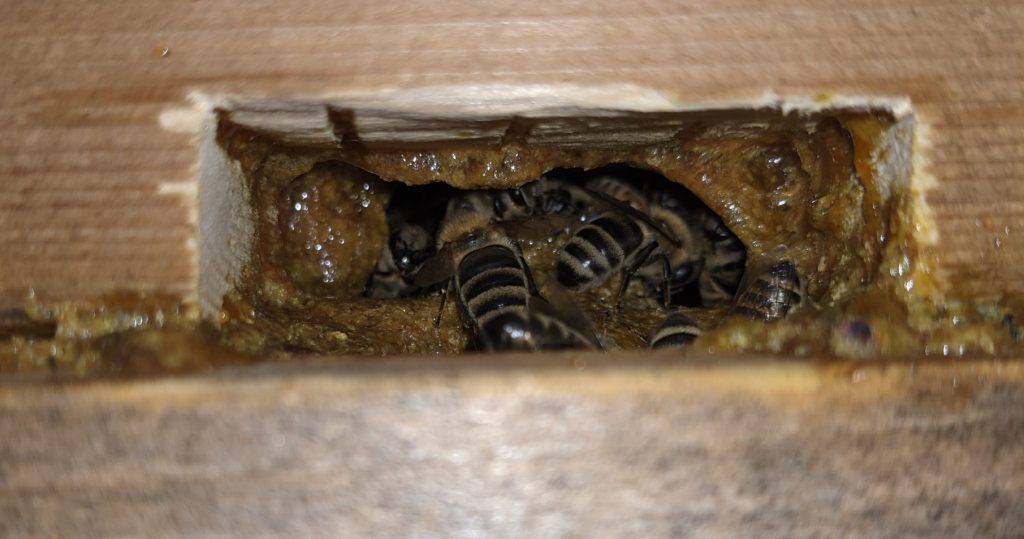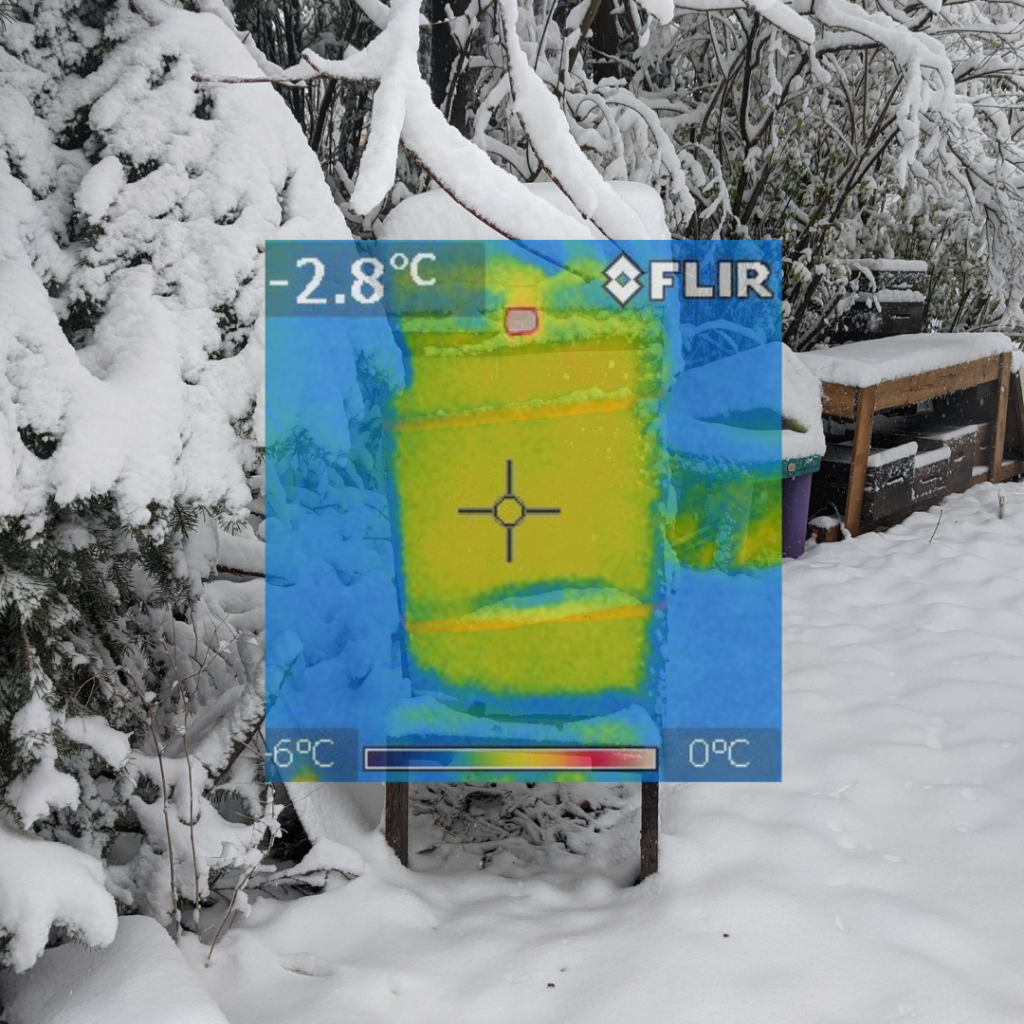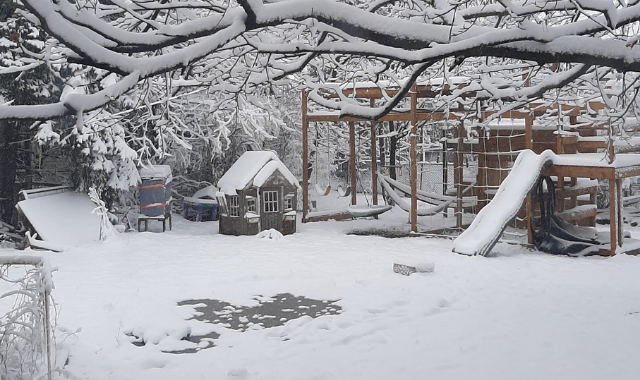Well, we woke up this morning to a fairly substantial snowfall, which of course begs the question, “How are the bees doing?”
So, I threw on some boots, trudged out to the back of the yard and went to go check on them. There’s not a whole lot you can do to check on them in the winter. You can’t open the hive, because it’s too cold for them to seal it back up again. But you can tell a few things.
For one, there are dead bees at the entrance and in the snow below the hive. That’s actually a good sign, because it means the undertakers are still working. I can still see in the bottom entrance and it’s not clogged up with dead bees. At some point it probably will be and I’ll have to decide if I should clear it out or not, but for now, we’re okay. Usually people have to worry about clearing that path if there is no upper entrance in their hive, but mine does. They don’t tend to use it nearly as much, but it does exist.
There’s a lot of controversy about whether or not an upper entrance is a good idea. Some feel it’s just unnecessary. Others feel it invites pests. Our bees actually mostly closed up the hole, but not completely, so I’m not sure if it’s that they ran out of time, or that they got it the way they wanted it.

All that golden brown stuff you see is propolis – the glue they use to seal up the hive. It’s a sort of resin they make from the sap of conifer trees, like pine. Bees actually harvest from quite a few things, not just nectar from flowers. They also have been known to harvest fungi.
Anyways, so, they’ve partially sealed up the top entrance, at least making it smaller. Like I said, I’m not sure if they got to where they intended, or if they ran out of time. Either way, this gives another opportunity to see how they’re doing. Right now, there are no guard bees, they’re all clustered into a ball keeping warm, which means you can stick your fingers right up to the hive. This morning I put my fingers at the upper entrance (usually a good way to get stung), and you can feel the warm air coming out of it.
This is great, because it means there’s a sizeable enough colony of bees inside that the air is still warm coming out. I also managed to borrow a handy infrared camera from work so I could keep an eye on them, and you can see the hot air coming out of the top entrance.

The highest temperature I managed to get was about 6.3°C, over 8 degrees above the ambient temperature. Unfortunately, I can’t tell exactly where the cluster is inside of the hive because I added about 2 inches of insulation paneling around the hive to try and help them out. The hive walls are quite a bit narrower than what they’d have in a tree, so I thought I’d help make up the difference.
Many beekeepers swear by insulating, some say it’s not necessary. Made sense to me, so I thought I’d try it.
At some point during the winter, I might pull a panel off just to see if I can figure out where they are in the hive. As winter progresses, they should slowly move up. But right now, they’re likely still in the bottom brood box with three boxes full of honey on top of it.
The basic game is, if spring comes before they move all the way to the top and run out of honey, then they survive. If not, then they starve to death. There are other concerns, like moisture, but I think I have the moisture risk solved. Mice are also a potential concern, but the entrances are pretty small, so I’m hoping that will keep them out.
Anyways, the winter dearth is just getting started and we have four or five months to go before the flowers start blooming and they can start making food again. I’ll keep you posted on how it’s going.


Very informative … thanks for sharing